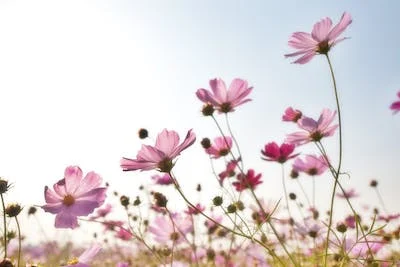Shocking Discovery in Antarctica: Flowers Bloom at Unbelievable Speeds! You Won’t Believe Why!
Flowers in Antarctica: A Blooming Sign of Global Warming
As Polar Temperatures Rise, Unprecedented Floral Growth Emerges in the Frozen Continent
By Fasaic Flensburg
Antarctica, the desolate and frozen continent at the bottom of the world, is typically associated with icy landscapes, extreme cold, and a barren environment. However, recent observations by scientists have unveiled an unexpected and stunning phenomenon: the emergence of flowers in Antarctica. This remarkable occurrence is being seen as a clear sign of the far-reaching impacts of global warming on our planet.
In the past few decades, Antarctica has been experiencing significant warming, primarily driven by the relentless rise in global temperatures due to human-induced climate change. This warming trend has resulted in the melting of ice shelves, the retreat of glaciers, and the loss of critical habitat for countless species. But it has also created conditions in certain parts of the continent that are now conducive to plant growth.
One of the most significant discoveries was made on the Antarctic Peninsula, the region closest to South America. This area has warmed at an alarming rate, nearly three times the global average, over the past half-century. As a result, researchers have observed the growth of mosses and lichens in the region. However, the presence of flowering plants is a novel development and has left scientists astounded.
Dr. Sarah Turner, a leading botanist at the Antarctic Research Center, explained, “This is unprecedented. We have never seen flowering plants on this scale in Antarctica before. It underscores the profound effects of climate change on even the most remote and inhospitable parts of our planet.”
The flowering plants identified include Antarctic hairgrass (Deschampsia antarctica) and Antarctic pearlwort (Colobanthus quitensis). These hardy species have adapted to the harsh Antarctic conditions over millennia, but the current warming trend has allowed them to flourish and reproduce at an unprecedented rate.
While the sight of flowers in Antarctica may seem picturesque, it carries significant implications for the continent’s ecosystems and the delicate balance of life in the region. Increased vegetation can alter local microclimates, potentially providing more suitable conditions for other plant species to thrive. This, in turn, may attract herbivores, insects, and other fauna not previously seen in the area, thereby reshaping the entire Antarctic ecosystem.
Furthermore, as the flowers bloom and die, they release organic material into the soil, affecting nutrient cycling and potentially impacting the local food web. These changes could have far-reaching consequences for the many species, such as penguins and seals, that rely on the Antarctic environment for their survival.
The appearance of flowers in Antarctica serves as a stark reminder of the urgent need to combat climate change. As global temperatures continue to rise, the once-pristine and untouched landscapes of the polar regions face an uncertain future. Scientists are closely monitoring these developments to gain a deeper understanding of the impacts on the continent’s biodiversity and to inform conservation efforts.
Efforts to mitigate the effects of climate change, such as reducing greenhouse gas emissions and protecting fragile ecosystems, have never been more critical. The sight of flowers in Antarctica may be beautiful, but it is also a powerful symbol of the changes occurring on our planet, signaling the need for immediate action to preserve the unique and fragile ecosystems of the frozen continent.
